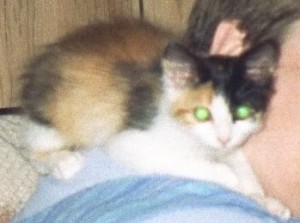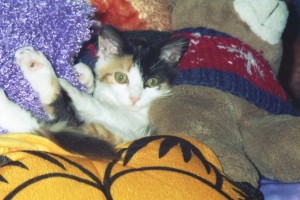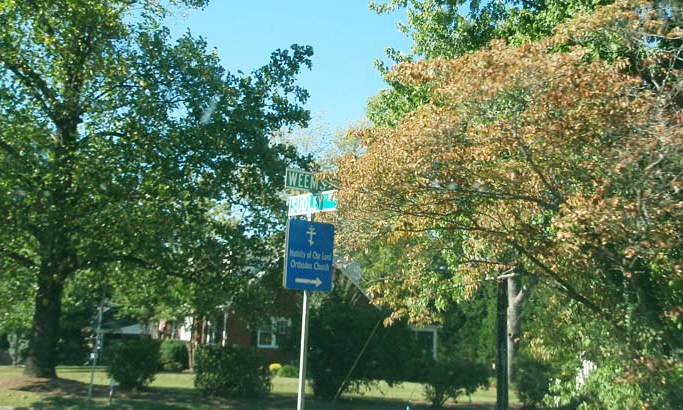Tonight I was tending to my small flock of chickens and was in the chicken yard and found a ringneck snake under a waterer. I watched it a bit and then went back to cleaning and filling the waterers up. A minute or two later, a little red hen came running up and jumped on the ringneck snake and pecked it and slung it around until it was limp, and then she ran off with it, carrying it around and having a good time. It took a lot of doing for her to kill it (assuming it was dead.) There are a couple of black rat snakes that hang around looking for eggs every few days, one 4 or 5 feet long and the other 6+ feet long, and the hens cluck and scold them and sometimes even run up at them. It occurred to me that killing the little snake might have felt a bit like revenge to the hen. Of course, I don’t know how a hen feels or thinks. I often have a difficult time deciphering my own thoughts and feelings.
Monthly Archives: September 2013
Eureka Springs Independent Newspaper Column for September 26, 2013
I was recently reminded of my father’s story of when he worked at Onyx Cave as a kid in the early 1950s. He was a tour guide and had a group of people deep into the cave when the lights went out. He left them in absolute darkness while he ran up the path behind the glow of his official tour guide flashlight to see what the problem was. The generator had stopped and he had to get it running again before returning to the huddled mass of bewildered tourists.
What reminded me of my father’s small adventure was finding the story of the discovery of Onyx Cave in an old email from Lee Mathis-Fancher. Her great-grandfather, Will Robbins, found Onyx Cave on his property while searching for lost treasure left by Spaniards of long ago. After using dynamite to blast away rock in his search he found a cave in the hillside. He wasn’t as happy with a cave as gold and jewels, but he was able to charge admission for people to explore his cave. It is said to be the oldest show cave in the state of Arkansas.
In the 1920s, my grandfather, Jack McCall, would ride by horseback with friends over to Onyx Cave to look around. He said they knew it was time to get out when there wasn’t enough oxygen for their pine knot torches to burn properly.
Years later, Grandpa would drive cattle over the mountain to pasture he rented near Onyx Cave. Along the way was a hole in the ground that if you dropped a rock in it there would be a splash. He said it was rumored Jesse James had put a raft down there so he could float to a shelf of rock where his gold was hidden.
Worried a cow might fall in the hole, Grandpa built a heavy wooden platform and covered it up. He planned to take me up there and show me that hole in the ground, but time got away from us and it’s too late now.
If you have a comment or story, write to me at P.O. Box 43, Eureka Springs, AR 72632.
Gone, Not Forgotten
Weems Road in Manassas, Virginia
Eureka Springs Independent Newspaper Column for September 19, 2013
McKinley Weems missed school March 21, 1932 because of a broken nose, the same day the Thach Hotel burned down, but he saw the fire. He watched from the comfort of his tree house in a big oak on Magnetic Mountain as strong winds spread the flames. From his high vantage point, he could see sparks shooting into the sky and rolling smoke so thick it was impossible to know which direction the fire would go.
The fire is thought to have originated in the hotel attic, possibly due to faulty wiring. With 100 rooms, the rambling Thach Hotel was the largest in town and was known for its home-style food. Otto Ernest Rayburn said it was popular with Texans.
Fire Chief Sam Riley, an expert carpenter when not fighting fire, arrived on the scene and quickly called for help from neighboring towns. Located on the ridge top at the corner of Ridgeway and Prospect Avenues, the Thach Hotel was unsheltered from the driving wind. In later years, after the rubble had been removed, some considered it the best spot in town to fly a kite.
At the old Red Brick School senior class boys stood on the roof knocking off burning debris, while younger children watched the fire until they were sent home carrying all their books in case the school burned down.
Fire trucks arrived first from Berryville, and then Fayetteville and Harrison. The fire was brought under control but not until the fire had spread enough to burn down the First Christian Church, an apartment building, and damage or destroy several houses.
At the time, there was a baseball field located on what would now be Passion Play Road. It was a popular place, especially on Sundays, with crowds of people walking up from Mill Hollow or up Magnetic Road. The day before the fire, McKinley Weems, a fifth grader, had played baseball with the grownups and was hit square in the nose by a ball.
He doesn’t remember the name of his teacher that year, but he remembers she paddled the backs of your calves if you misbehaved. And the Thach Hotel fire is the type of thing a fifth grade boy with a broken nose remembers, too.
Eureka Springs Independent Newspaper Column for September 12, 2013
After we bought our place down in the hollow, I found a “Bill Clinton for Congress” bumper sticker stuck to a barrel in an outbuilding. Back in 1974, he ran for the House of Representatives in this district against the popular incumbent, John Paul Hammerschmidt, and lost by only a few thousand votes. Not bad for a 28 year-old lifetime student and law professor.
I saw Bill Clinton twice in Carroll County before he left Arkansas for greener pastures. In 1984, I skipped school and attended the famous “Super Cow Clinic” in Green Forest with Grandpa Jack McCall. The place was overrun with politicians, including Bill Clinton campaigning for reelection as governor. His opponent that year was businessman Woody Freeman, the clear favorite among old cattlemen and farmers.
One of the contests at the cattle show was the always popular buffalo chip throwing contest. The announcer asked the governor to come up and give it a try. When Bill demurred, the announcer started ribbing the governor pretty good. So Bill stepped forward, chose a buffalo chip and let it fly. It didn’t hardly go anywhere at all. Some in the watching crowd let their displeasure be known. The opponent in the governor’s race eagerly came forward and threw the buffalo chip like he was a professional. The crowd cheered.
A big attraction at the “Super Cow” was the free barbecue lunch. There was a long line waiting to get their plates filled and Bill Clinton started at the end and worked his way up the line shaking hands and talking to people. The governor just wasn’t in his element that day. When he was near us, I saw that he was pale, sweating and clearly nervous. He did look Grandpa in the eye, though, as he shook his hand and then he came to me. Excited to meet the Governor of Arkansas, I stuck out my hand. Well, Bill studied my face, apparently noting that I was not yet of voting age and withdrew his hand before it touched mine and moved on down the line looking like he wished he could get out of Green Forest, Arkansas.
The last time I saw Bill Clinton, I was driving east on Highway 62 from Eureka. I knew Bill was around for something or another, so when I came up behind one of those Lee Iacocca K-car specials with an Arkansas government license plate, I wasn’t too surprised to see the governor in the car. I was a bit surprised that he was alone. I followed him into Berryville and he turned onto Highway 21/221 north. I’ve always wondered where the governor was going.
A couple of years ago on a whim, I sent a copy of my book to Bill Clinton’s New York office and received a very nice reply. That more than made up for him not shaking my hand that miserable day in Green Forest. Like him or not, excluding Johnny Cash, Bill Clinton would certainly be considered our greatest native son.
Eureka Springs Independent Newspaper Column for September 5, 2013
Excluding the federal government, the largest landowner in Carroll County is the Nature Conservancy. For years The Nature Conservancy of Arkansas had recognized many threats to the rivers of the Ozarks, and analysis determined that the most important river to protect was our own Kings River. In 2010, the Nature Conservancy purchased seven miles of the Kings River and established the Kings River Preserve. It has been called a crown jewel of the Conservancy’s work in the state.
The preserve is so large because the previous landowner spent decades building the property, which eventually encompassed 15 different farms along the Kings River. One of the farms now owned by the Conservancy is my great-grandfather Southerland’s 600-acres located primarily in the Mason Bend near Trigger Gap.
Tim Snell is the Associate State Director of Water Resources for the Nature Conservancy of Arkansas and has been instrumental in the preservation and management of the Kings River Preserve. Talking with him, he said that the seven-mile stretch purchased is nearly pristine and there are many reasons to keep it that way. The preserve not only provides habitat for several rare species and a wilderness quality float location, but the Kings River feeds Table Rock Lake that provides drinking water to dozens of communities.
Soil erosion along the river is a major cause of water quality degradation, especially during flooding. There has been progress stabilizing the riverbanks with a multitude of advanced methods, including the planting of 40,000 additional trees. The Nature Conservancy has an extensive cadre of scientists, specialists and technical advisors who have provided expertise to improve the river corridor meandering through the Kings River Preserve.
There is always talk of eco friendly tourism in Eureka Springs and it doesn’t get any greener than this. If you get a chance, call a river outfitter and see for yourself.
The bluffs and otters and trophy small mouth bass are impressive, but what amazes me are those giant crawdads found only in the Ozarks. Did you know they can get nearly a foot long?



